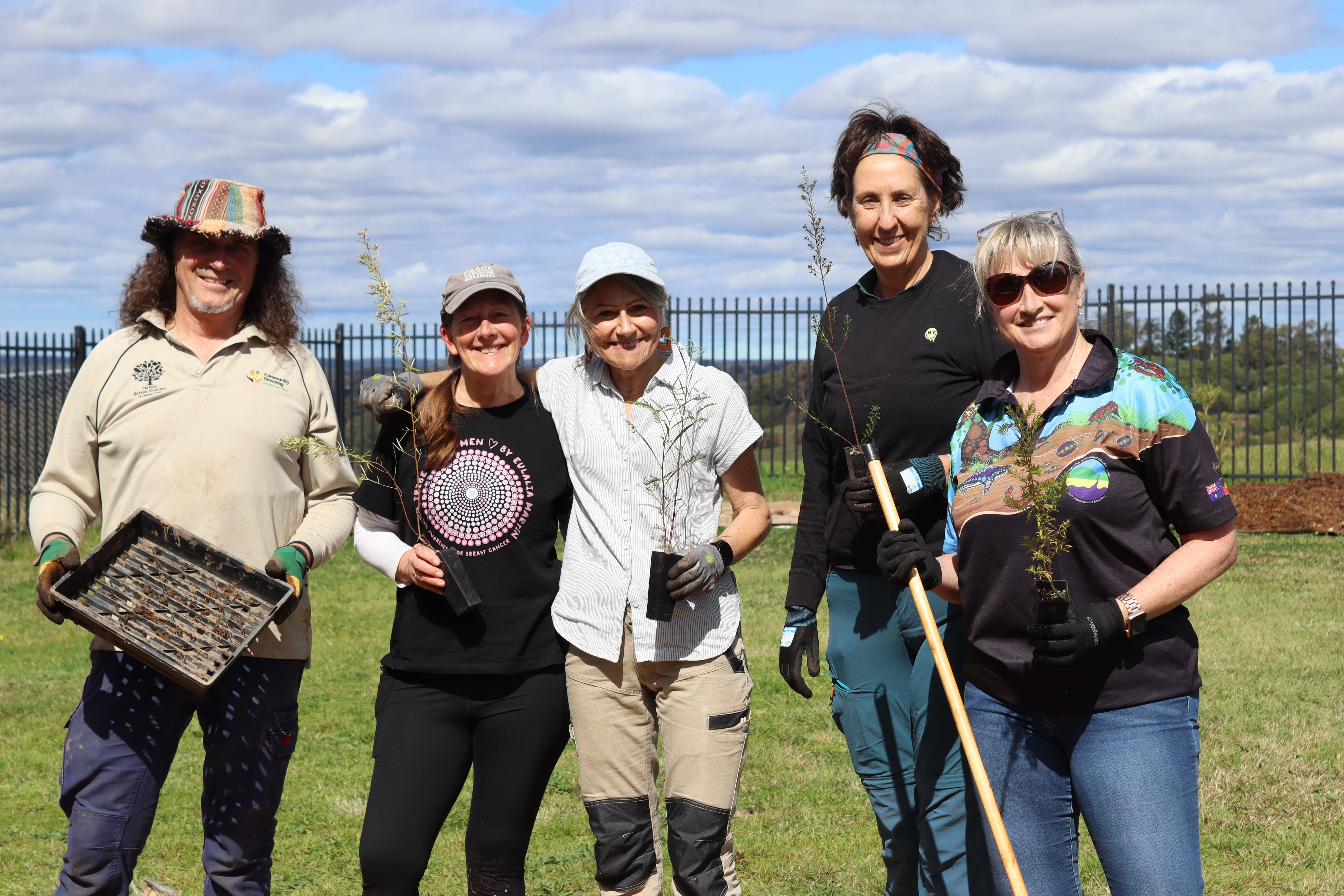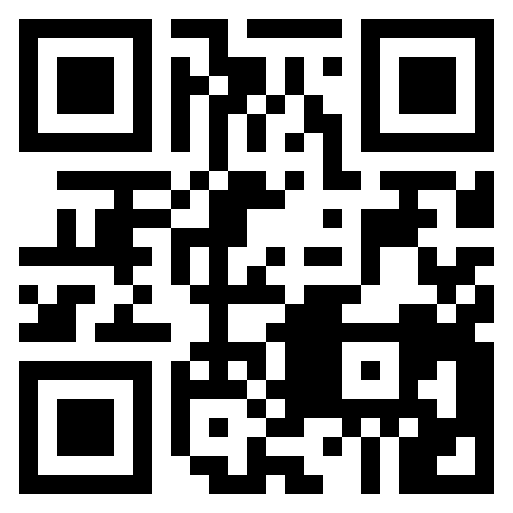Observe, count and contribute to science with the Tiny Forest Wildlife Count!
The Tiny Forest Wildlife Count is taking place 17 May - 1 June 2025. The count is a simple wildlife survey across the 280+ Tiny Forests in the UK.
We’re calling on everyone to get involved and help track how their local Tiny Forest is supporting wildlife. Connect with nature, boost your wellbeing and discover the wildlife in your community.
Join in the fun this May and count the bugs and butterflies at your local Tiny Forest!
Sign up to receive the Wildlife Count Packs with guides on doing the surveys and fun family activities. You will also receive emails with updates and reminders about the Wildlife Count.
Step 1.
Get ready
Find your nearest, or preferred, Tiny Forest on our national map and view its profile page. Here you will find a link to the biodiversity surveys specific for your forest.
Instructions on how to complete each survey are provided in the downloadable Survey Guides and videos listed below.
Step 2.
Join in and have fun
Choose a day and time between Saturday 17 May and Sunday 1 June 2025 to visit your local Tiny Forest. You can try and coordinate with friends, make it a community event or just go on your own.
There are four Wildlife Count surveys: two butterfly surveys, a pollinator survey and a ground dweller survey. Each survey should take no more than 15 minutes to complete and you can carry out as many or as few surveys as you wish.
Step 3.
Submit your data
The easiest way to submit your data is by using the online surveys. This can be done in real-time whilst you're at the Tiny Forest if you have internet connection - so remember to bring your phone. If you’d prefer to use paper, or if phone signal is an issue, you can download and print the field sheets for each survey under our FAQs 'Can I do a paper survey and send my result by post instead of online?'. You’ll then need to go to the online survey and upload the data by Monday 2 June 2025.
After the Wildlife Count, keep an eye on our Tiny Forest website for the results!
Search our Tiny Forest sites and access your Survey


Ajuga Tiny Forest
Sydney,
Australia









Barnet Food Garden
London,
United Kingdom



Bell Green Road
Coventry,
United Kingdom



















Caeau Trehafren Coetiroedd Bach
Newtown,
United Kingdom











Clipstone
Leighton Buzzard,
United Kingdom
Coedwig Cwtch
Bridgend,
United Kingdom
Coetir Bach: CB Dyfi Dairy
United Kingdom
Coetir Ysgol Glanrafon
Yr Wyddgrug,
United Kingdom










Cuckoo Park
London,
United Kingdom



Devitt Way
Leicester,
United Kingdom





Dunnock Road
Northamptonshire,
United Kingdom











Eyres Monsell Primary School
Leicester,
United Kingdom


Featherstone Drive
Leicester,
United Kingdom





Foresters Road
Coventry,
United Kingdom




Fraser Street Reserve Tiny Forest
Melbourne,
Australia
Frenhines Forest
Bridgend,
United Kingdom






Giffords Primary
Northolt,
United Kingdom
Gilbert Inglefield Academy
Leighton Buzzard,
United Kingdom










Gwenfro Community Primary School
United Kingdom



Hanger Hill Park
London,
United Kingdom


Headlands Park
Market Harborough,
United Kingdom











Jubilee Park, Charnwood
Loughborough,
United Kingdom









Ku-ring-gai Tiny Forest
Sydney,
Australia





Lime Tree Park
Northolt,
United Kingdom
Lincoln Close, Borras
Wrexham,
United Kingdom









Maulden Lower School
Bedford,
United Kingdom


Melton Country Park
Melton Mowbray,
United Kingdom






Montrose Primary
Leicester,
United Kingdom




Mountsorrel
Mountsorrel,
United Kingdom


Mutton Brook Biochar Tiny Forest
London,
United Kingdom
Mutton Brook Excavated Tiny Forest
London,
United Kingdom
Mutton Brook Sheet Mulch Tiny Forest
London,
United Kingdom


Netherhall Open Space
Leicester,
United Kingdom

New Road Park
London,
United Kingdom

Nickson Road Tiny Forest (Plot 1 - High Density)
Coventry,
United Kingdom
Nickson Road Tiny Forest (Plot 2 - Low Density)
Coventry,
United Kingdom

North Mead Primary Academy
Leicester,
United Kingdom
North Norland
London,
United Kingdom


Old Banwell Road Playing Fields
Weston-super-Mare,
United Kingdom


Paignton Park
London,
United Kingdom


Pakapakanthi Tiny Forest 2
Adelaide,
Australia


Parc Poced Marlas Pocket Park
Bridgend,
United Kingdom





Pencaerau Primary School
Cardiff,
United Kingdom


Penygraig
Wrexham,
United Kingdom


Pontnewydd Primary School
Cwmbran,
United Kingdom



Prosiect Grange Project
Monmouth,
United Kingdom











Ringland School
Newport,
United Kingdom
Ringwood Hill
United Kingdom
Robert Bloomfield Academy
Shefford,
United Kingdom















Spelthorne
Staines,
United Kingdom
Springwood Primary School
Cardiff,
United Kingdom
St Gregory's Catholic School
London,
United Kingdom


St Mark's Primary School
London,
United Kingdom
St Paul's Primary School
Gateshead, NSW,
Australia





Tarrant Walk
Coventry,
United Kingdom


Teralba Public School
Teralba,
Australia





Thimbler Road
Coventry,
United Kingdom


Thornhill Primary
Dunstable,
United Kingdom
Thurcroft Junior Academy
Rotherham,
United Kingdom

Tiny Forest at Little West
Cowbridge,
United Kingdom
Tocal Agricultural College
Paterson, NSW,
Australia
















Walford Avenue Open Space
Weston-super-Mare,
United Kingdom


West Acton Primary
London,
United Kingdom





Whipsnade Zoo
Dunstable,
United Kingdom





Whitley Common
Coventry,
United Kingdom




Winterstoke Hundred Academy
Weston-super-Mare,
United Kingdom

Wormholt Park
London,
United Kingdom



Ysgol Dewi Sant
Llantwit Major,
United Kingdom
Ysgol Gymraeg Glan Ceubal
Cardiff,
United Kingdom
Ysgol Gymunedol Gynradd a Meithrin Graig-Y-Rhacca Primary and Nursery Community School
Caerphilly,
United Kingdom
Survey Guides
Butterfly Timed Count Survey Instructions
Butterfly Species List Survey Instructions
Butterfly ID guide
Pollinator Timed Count Survey Instructions
Pollinator ID Guide
Ground Dweller Survey Instructions
Ground Dweller ID guide
Watch our short videos on how to complete each type of survey:
Butterfly Timed Count Survey
Butterfly Species List Survey
Pollinator Timed Count Survey
Ground Dweller Survey
Why take part?
The Tiny Forest Wildlife Count will have huge benefits – both for you, and for science!
The health and wellbeing benefits of spending time in nature are well-documented. Taking part in a Tiny Forest citizen science survey is a great opportunity to spend some meaningful time outside in your local area. It’s also a brilliant way to connect with your community and spend time with family and friends in the fresh air and green space.
By taking part in citizen science, you become a vital part of our environmental research. We use science to better understand the environmental challenges we face, and to find solutions to these issues. In particular, the data you provide will allow us to better understand how a Tiny Forest can support wildlife in urban areas.
Thank you for taking part!
If you don’t have a Tiny Forest near you, but think it would be good for your community, you can put in a request to your local authority or get in touch with us here for more information.
FAQs
How do I access the surveys?
To access the biodiversity surveys first go to our national map and select the forest you would like to survey. Click the icon to get to its profile page. Here you will find a link to the biodiversity surveys for your chosen Tiny Forest.
Can we take part as a group?
Definitely! The more, the merrier. You can complete each survey as a group, or you can each individually collect data, ideally conducting the surveys in different parts of the Tiny Forest to avoid data being duplicated.
Does it matter what time of day I do the surveys?
Wildlife is more active when the weather is warmer, and the area is calm and undisturbed. We recommend you carry out the surveys in the middle of the day and especially when it is not raining. Lunchtime is a great moment to come to the forest and take a break. But if you are not able to get to the forest at this time, do not worry, the data you collect will be just as valuable for our research.
Can I choose which survey I do?
Of course! Do the survey you like the most and that fits your time availability and interests. If you can do more than one survey that is even better, you may be surprised at what you can learn and see.
Can I do multiple surveys during Biodiversity Week?
Absolutely! Just make sure that you do not repeat the same survey in exactly the same spot or location of the chosen Tiny Forest. This allows us to record as many areas of the Tiny Forest and prevents data replication, ensuring the most robust scientific research.
What about the weather? Will this affect the results?
The weather will affect the results, and we want to know about that too! We are also interested to know when and which type of wildlife is more active versus less active. The variety of conditions during data collection will allow us to understand this.
How do I submit the results and by when?
Please submit your results through the online survey forms available on your chosen Tiny Forest’s profile page by Sunday 26 May.
Can I do a paper survey and send my result by post instead of online?
We would like to encourage everyone to submit their data using the online survey to save paper, postage and time. Nevertheless, if you find this a challenge, please do send your printed sheet with data to the address below. Do not forget to add all the details in the printed version, especially what Tiny Forest you collected the data from!
Download the Survey Data Sheets here:
Butterfly Timed Count Survey Field Sheet
Butterfly Species List Survey Field Sheet
Ground Dwellers Survey Field Sheet
Pollinator Timed Count Survey Field Sheet
Tiny Forest Research Team
Earthwatch Europe
Mayfield House
256 Banbury Road
Oxford
OX2 7DE, UK
Why are Tiny Forests beneficial for biodiversity?
As our cities expand, habitats are lost and wildlife is increasingly under threat. Planting Tiny Forests in urban areas can create space for wildlife and provide valuable stepping stones connecting small habitats in urban areas. Research has shown that a Tiny Forest is capable of attracting over 500 animal and plant species within the first three years. We are tracking how biodiversity changes over time across our Tiny Forest network, providing vital evidence to show how nature-based solutions can enhance our towns and cities.
I’m a teacher, can my school get involved?
Yes, you and your students can take the classroom outdoors and get involved with Biodiversity Week. To support your teaching you can find free teaching resources, and if you have any questions please get in touch with our Education team at This email address is being protected from spambots. You need JavaScript enabled to view it.

